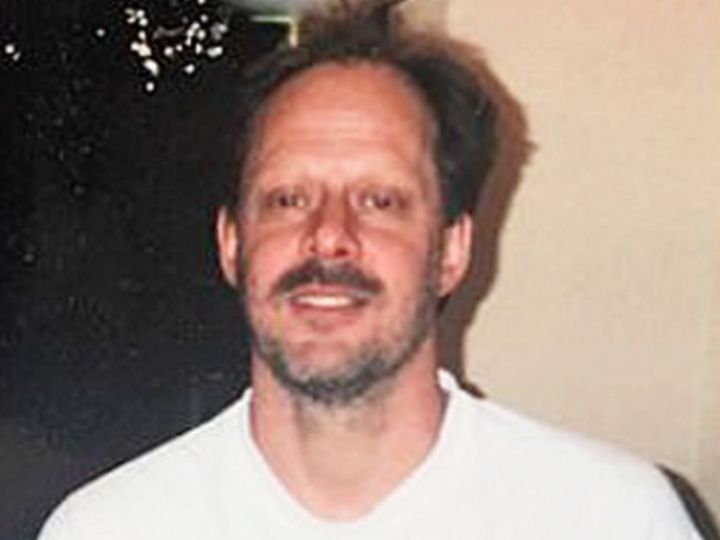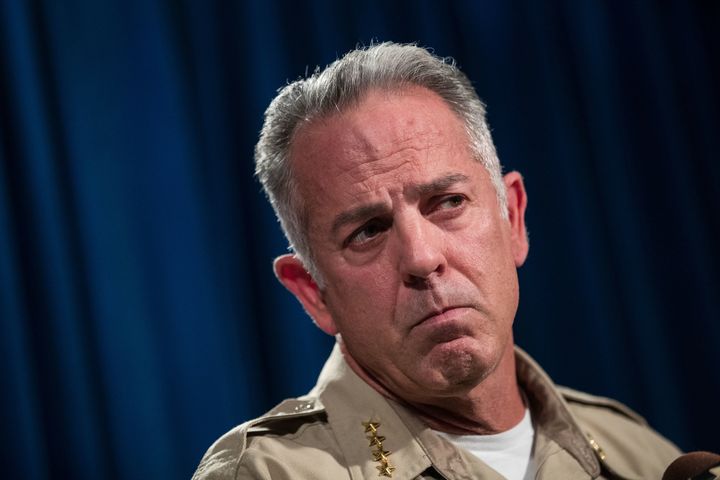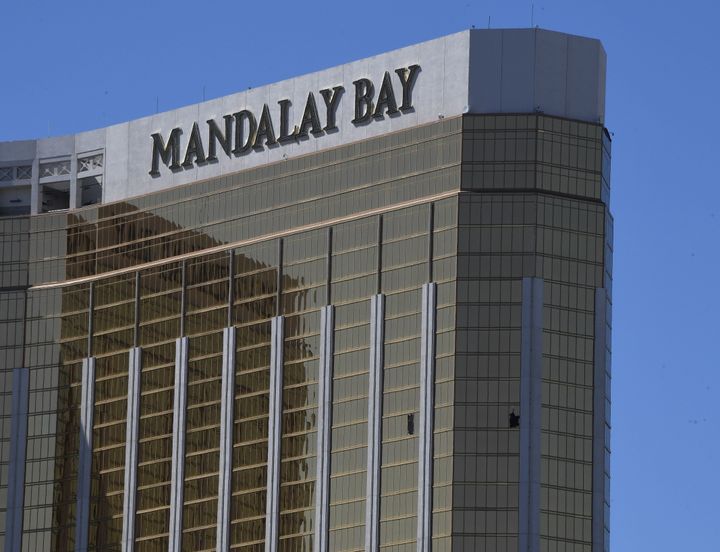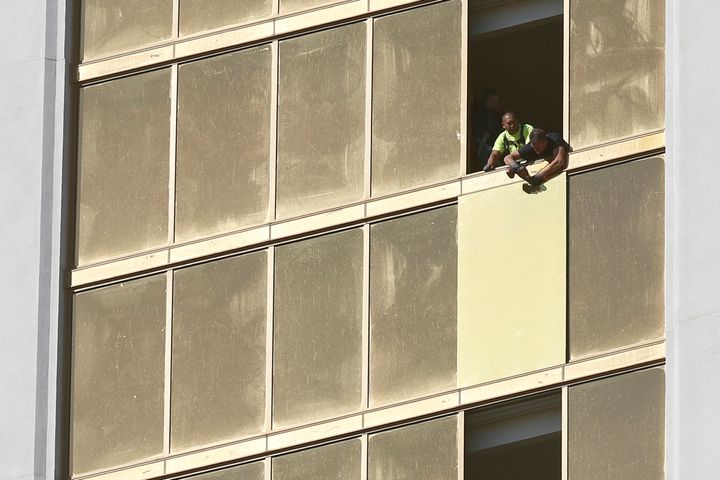The Las Vegas gunman opened fire on a security guard six minutes before he rained down bullets on a crowd and killed 58 people, officials said on Monday in a change to the timeline of the deadliest mass shooting in modern US history.
Stephen Paddock was seen on numerous occasions in Las Vegas without any person accompanying him and gambled the night before the shooting, Clark County Sheriff Joseph Lombardo said at a news conference.
The 64-year-old killed himself after the October 1 attack.
“This individual purposely hid his actions leading up to this event, and it is difficult for us to find the answers,” said Lombardo, who admitted he was frustrated with the speed of the investigation.

He added: “In coordination with the FBI’s behavioral analysis unit, a comprehensive picture is being drawn as to the suspect’s mental state and currently we do not believe there is one particular event in the suspect’s life for us to key on.”
Paddock sprayed an outdoor concert with bursts of gunfire from a room on the 32nd floor of the Mandalay Bay Hotel Resort And Casino, where he had a stockpile of weapons, injuring several hundred concertgoers.
There is no indication anyone other than Paddock fired on the crowd, Lombardo said, adding investigators are talking to family members and Paddock’s girlfriend Marilou Danley .
Paddock shot and wounded a security guard who came to his floor at the Mandalay Bay hotel to investigate an open door down near Paddock’s suite, Lombardo said, providing new details on what occurred immediately before the mass shooting.

The security guard, Jesus Campos, was struck in the leg as the gunman, from behind his door, shot into the hallway on the 32nd floor. Paddock apparently detected Campos via surveillance cameras he set up outside his hotel suite, police have said. Reports claim Paddock fired 200 shots at Campos.
Paddock shot the Campos at 9:59 pm local time, Lombardo said, shortly before opening fire on the Route 91 Harvest festival in an attack that began at 10:05 pm and lasted 10 minutes.
Police officers found Campos when they arrived on the floor.
Paddock had a document in the room with him that contained numbers, Lombardo said, adding he could not immediately say what purpose the figures served.
Investigators believe the number may represent calculations made for precision shooting, some media reports have claimed.
Authorities also said on Monday that Paddock targeted aviation fuel tanks at McCarran International Airport, stocked his car with explosives and had personal protection gear as part of an escape plan.
Las Vegas police officer David Newton told CBS News program “60 Minutes” on Sunday that he entered the room and saw a note on the shooter’s nightstand with numbers that appeared to be designed to help his aim.
It was unclear why Paddock stopped firing at the crowd, suggesting he may have initially planned to escape, Lombardo said.
Meanwhile, the fate of the hotel suite - room 135 - where Paddock unleashed his massacre remains unclear more than a week after the tragedy, although the smashed-out windows have been covered over.
The resort, owned by MGM Resorts International, has yet to say what it will do with the space.
The challenge is particularly difficult for a hotel in Las Vegas, a place where visitors go to escape everyday lives and real-world problems.
“How do they navigate the fact that this happened in their hotel?” said Andrea Trapani, managing partner at Identity, a Detroit-area public relations firm that provides crisis communications for hospitality brands.

“A lot of challenging tough questions and decisions are going to be made.”
The hotel might want to consider sealing up Room 32-135, or even the entire floor, to avoid becoming a destination site for gawkers fascinated by its macabre history, some experts have suggested.
Officials facing similar decisions at the schools, churches and other places where mass shootings have taken place in recent years have gone in a variety of directions.
Some of the venues have been dismantled completely. Others, like the San Bernardino, California community center where a husband and wife killed 14 people in December 2015, have reopened, with officials saying that getting back to work helping people was integral to healing.
The Orlando, Florida nightclub where a gunman killed 49 people in June 2016, remains closed, and the owner plans to turn it into a memorial.
Connecticut’s Sandy Hook Elementary School, where 20 children and six adults were killed in 2012, was demolished and rebuilt four years later.

A spokesman for Mandalay Bay declined to comment on its plans.
But it appeared highly unlikely the suite would simply reopen as if nothing had happened there.
“I wouldn’t want to stay in that room,” said North Carolina tourist Randy Dockery, at a makeshift memorial for the victims in a narrow patch of grass along the Las Vegas Strip.
Some experts suggested Mandalay Bay should erect a memorial somewhere in the hotel, either permanent or temporary, and throw a fundraiser for the victims and their families.
“The hotel was absolutely a victim as well, and by transforming some space into something that honors the victims, they could hopefully promote healing and actually some good,” said Kim Miller, president of Florida-based Ink Link Marketing, whose work includes advising companies on crisis management.
For Dockery, the choice was obvious.
“The memorial should be over there,” he said, pointing at the hotel. “But probably they don’t want the publicity.”
